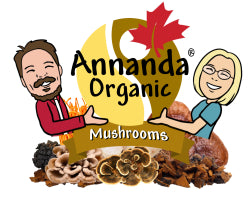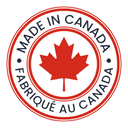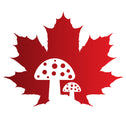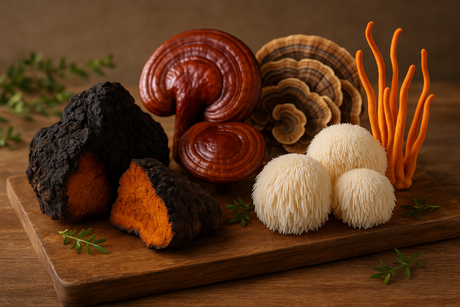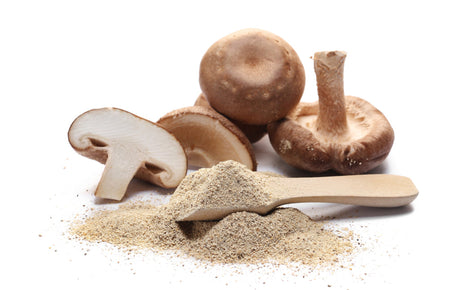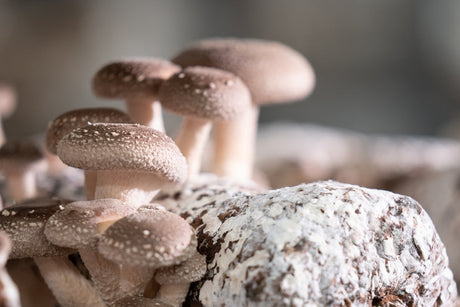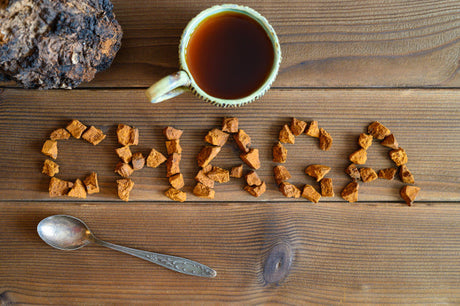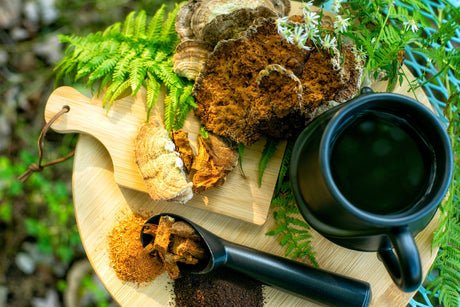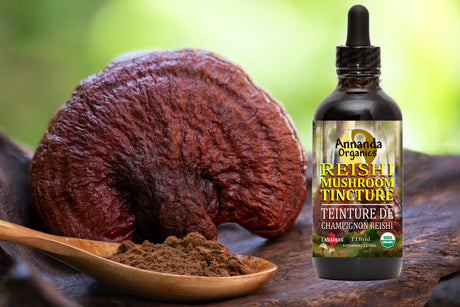Foraging for wild mushrooms can feel like a treasure hunt, but when it comes to mastering the art of chaga mushroom harvesting, there’s more to the adventure than just luck. Renowned for its impressive health benefits and unique, earthy flavor, chaga is a prized find for foragers and health enthusiasts alike. This step-by-step guide will equip you with the essential knowledge, techniques, and tips to identify, harvest, and prepare this remarkable mushroom sustainably. Whether you’re a seasoned forager looking to expand your knowledge or a curious beginner eager to explore the enchanting world of fungi, mastering chaga mushroom harvesting will enhance your connection to nature and enrich your culinary repertoire. Get ready to embark on a journey that celebrates the rich flavors and health properties of chaga, while ensuring that your foraging practices contribute positively to the environment. Let’s dive into the art of foraging and uncover the treasures that await in the great outdoors!

From our humble beginnings back in 2012 we wrote a heartfelt testimony entitled "Harvesting to Heal" which celebrates our enthusiasm and trials of a small Canadian family company trying to spread awareness about the benefits of chaga mushroom to the world. Consider this blog to be a seasoned update to our initial prologue and shining beacon to those new to the birch tree mushroom Chaga. If you are knowledgeable about chaga consider this blog a welcome refresher which includes some new insights into the world of chaga mushrooms.
What are Chaga Mushrooms?
Chaga is the common name for the fungus, Inonotus obliquus, used to brew chaga tea. Chaga is also commonly known as the cinder conk, and to some mycologists as the ‘clinker polypore’. In chinese cultures chaga is known as Bai Hua Rong or Hua Jie Kong Jun. The Japanese know chaga mushroom as Kabanoanatake. Learn even more in our What is Chaga? page
Identifying Chaga Mushrooms in the Wild
Chaga mushrooms, scientifically known as Inonotus obliquus, are a unique type of fungus that grows predominantly on birch trees. They are easily recognizable by their distinctive appearance, which sets them apart from other common mushrooms. Chaga is not your typical cap-and-stem mushroom; instead, it appears as a dark, crusty mass on the bark of trees. The outer surface of chaga is black and cracked, resembling burnt charcoal, while the inner core is a rich, golden-brown color. This dual-toned structure is a key identifier for foragers.
When searching for chaga, focus primarily on birch trees, as they are the preferred host for this mushroom. Chaga is a parasitic fungus that draws nutrients from the birch tree, which in turn imbues the chaga with its potent medicinal properties. You will typically find chaga growing on the northern side of the tree, where the environment is cooler and more shaded. This preference for the northern exposure is another clue to look for when identifying potential chaga growth.
It's important to distinguish chaga from other tree growths, such as burls or cankers, which can look somewhat similar. A burl is a tree growth that results from stress or damage, while a canker is a fungal disease affecting trees. Both can appear as irregular growths on the bark, but unlike chaga, they lack the distinctive dual coloration. If you are unsure, use a small knife to scrape the surface gently. Chaga will reveal its characteristic rusty-brown interior, while burls and cankers will not.
What Does Chaga Look Like?

Although it is classified as a mushroom, chaga appears as a hard, sharp edged black coloured growth on host trees. It grows on birch trees (Betula papyrifera) nearly exclusively, and only rarely has been found attacking other trees. Chaga Mushrooms may be found on wounded or dying white birch trees in temperate forests around the northern hemisphere. Chaga looks like encrusted black formations; the sterile conk or mycelium grows out of wounds sustained after storms and other impacts that break branches. Chaga covers the tree's wound and protects it from invading microorganisms. The host tree and the Chaga can co-exist for many years and the chaga mushroom can be harvested up to three times over the course of its lifetime if harvested ethically with conservation in mind.
How does the chaga mushroom reproduce? Learn about
"The Sex life of the Chaga Mushroom"
History of Chaga Mushroom
Chaga tea has been used in Russia since the 16th century and was popularized in a 1968 novel, called ‘The cancer ward’ where chaga tea was purported to cure cancer. Chaga tea benefits suggest that chaga is a strong antioxidant and can slow tumor growth. Chaga is also reported to be effective for gastrointestinal cancer, cardiovascular disease, diabetes and arthritis.
Chaga Mushrooms have also been used in Ayurvedic and traditional Chinese Medicine for centuries. Chaga mushroom is often compared to similar fungi like the Reishi, Shitake, Maitake and Oyster mushrooms.
Chaga has been used by many cultures all around the world for centuries and used for prevention and cures for many types of diseases. Widely used in Russia, Poland and other Baltic countries as folk medicine for gastric problems, cancer, tuberculosis and heart and liver issues.

Chaga has been used in Russia as far back as the 16th Century for various cancers, especially tumors associated with angiogenesis (buildup of blood vessels that feed cancerous growths). In Siberia, chaga has been widely known to help treat tuberculosis, liver conditions and stomach problems including gastritis and ulcers. The Khanty people of Western Siberia put the chaga into fire and put the smoldering conk into hot water for use to clean and purify women's genital region after menstruation and birthing.
Also used in Canadian aboriginal culture First Nations people have been using Chaga for Centuries as well. Cree healers call chaga Poashkan or Wiskakecakomikih. Wisakecak is a mythological being who threw a scab mistaken for a piece of dried meat against a birch tree and tried to ingest it. Chaga produces a sweet smelling incense and is often used in smoking pipe ceremony. Used by the Cree and other native nations as a form of Moxibustion treatment to stimulate the body’s energy meridians.
The Best Locations for Chaga Harvesting
When setting out to harvest chaga mushrooms, location is everything. Birch forests are the primary habitats for chaga, with the highest concentrations typically found in colder climates. Northern regions, such as parts of Canada, Alaska, and Siberia, are known for their abundant chaga populations due to the optimal growing conditions provided by the cold temperatures and extensive birch forests. However, chaga can also be found in parts of the northern United States, Scandinavia, and other regions with similar environmental conditions.
To increase your chances of finding chaga, seek out mature birch forests with a high density of trees. Focus on areas that are less disturbed by human activity, as these environments tend to have healthier, more abundant chaga growth. Old-growth forests, in particular, are excellent locations to explore, as they offer a stable and undisturbed ecosystem where chaga can thrive. Additionally, areas with a history of fungal growth are promising spots, as the presence of other fungi can indicate suitable conditions for chaga.
It's also beneficial to pay attention to the health of the birch trees in the area. Chaga prefers living trees, but it can also be found on trees that are in decline. However, avoid trees that are completely dead, as the chaga on these trees may be less potent and more difficult to harvest. By focusing on healthy, mature birch trees in optimal environments, you can improve your chances of a successful chaga harvest.
What trees does chaga grow on?
There is a lot of confusion as to what trees chaga grows on. Chaga should only be harvested from living white or yellow Birch trees. Never harvest chaga from dead or fallen trees, also known as 'dead chaga' will appear black inside and out and will most likely contaminated with mycotoxins.
Where does chaga grow?
Avoid taking chaga from trees that look similar to Birch, specially Aspen, Popular, Beech trees. Chaga from these species of trees does not contain the highly prized betulinic acid which only comes from Birch and does not offer the same medical quality as Birch Chaga does.



Learn how to identify
the chaga fungus.
What does Chaga Look Like? That's NOT Chaga!
Ethical Harvesting Practices for Sustainability
Ethical harvesting is essential to ensure the long-term sustainability of chaga mushrooms and the health of birch forests. One of the most important principles of ethical harvesting is to take only what you need. Overharvesting can deplete local chaga populations and negatively impact the ecosystem. As a general rule, harvest no more than 30% of the chaga from any given tree. This practice allows the remaining chaga to continue growing and ensures that the tree remains healthy.
When harvesting chaga, use a sharp knife or hatchet to carefully remove the mushroom from the tree. Aim to cut as close to the tree as possible without damaging the bark. Avoid using excessive force, as this can injure the tree and make it more susceptible to disease. Leave a portion of the chaga attached to the tree, as this will allow it to regrow over time. By harvesting responsibly, you help maintain the delicate balance of the forest ecosystem.
It's also important to respect the natural environment while foraging. Avoid damaging other plants or disturbing wildlife. Stick to established trails whenever possible to minimize your impact on the forest floor. Additionally, always seek permission if you plan to forage on private land, and adhere to any local regulations or guidelines regarding wild mushroom harvesting. By practicing ethical foraging, you contribute to the preservation of natural habitats and ensure that future generations can enjoy the benefits of chaga.
How to Harvest Chaga
When harvesting Chaga always leave 1 to 2 inches behind so that the tree will remain protected and the birch chaga will regrow. Chaga mushroom can grow on the host tree for up to 20 years; if harvested properly you can harvest 3 to 5 times during the host tree's lifespan.
The chaga fungus is not a fruiting body but a sterile non-sexed conk. The Chaga and the host tree live together in symbiosis. The chaga extends the life of the host tree so that the fungi can thrive. Only years after the host tree dies will the chaga mushroom reproduce. When harvesting chaga always leave enough chaga behind so that the chaga fungus is flush with the exterior of the tree. This will ensure that the tree remains protected against any future infections.



Improper harvesting of Chaga is a big concern. If all the Chaga is taken from the host tree, the tree will succumb to infection or disease and will die within a few years. The Chaga will not regrow and will never have the opportunity to fruit and reproduce.
Tips on how to harvest chaga
Chaga often grows higher up on the tree so quite often one would need to climb up. Deer stands work great without harming the tree. Harvesting chaga from birch trees located higher up is preferred and is more potent.
- Do not harvest chaga from fallen or dead trees
- Do not harvest Chaga that has fallen to the ground.
- Do not harvest chaga that is moldy or shows signs of visible contamination or is littered with bugs or larvae.
- Do not harvest chaga that is black both on the interior and exterior - (dead chaga)
- Do not harvest chaga from trees growing on or immediately near contaminated lands, mills, hydro-cuts, industry etc.
- When harvesting chaga it should be at least the size of a large soft ball or much larger. The bigger the better.
- Harvesting chaga with the proper tools You can use an axe or, large sharp knife or machete, hammer & chisel or battery operated reciprocating saw because it is really very difficult to separate the outgrowths from the trunk.
- Always leave 1-2“ of chaga on the tree, when harvesting chaga never dig all of it out it will kill the tree and the inner core deep within the tree has no medicine.
- Respect the tree and nature - harvesting chaga should be done with respect for nature; always leave some behind so that the natural cycle can continue.
The Ideal Time for Harvesting Chaga
Timing is crucial when it comes to harvesting chaga mushrooms. The ideal time to harvest chaga is during the winter months, typically from late fall to early spring. During this period, the sap of the birch tree is not flowing as actively, which means that the chaga is less likely to be waterlogged. This results in a higher concentration of beneficial compounds, making the chaga more potent and effective for medicinal use.
Winter also offers practical advantages for foragers. The absence of foliage allows for better visibility of the tree trunks, making it easier to spot chaga growths from a distance. Additionally, the cold weather helps preserve the chaga once it has been harvested, preventing the growth of mold and other contaminants that can spoil the mushroom. Harvesting during this time also ensures that you are less likely to disturb the tree's natural processes, promoting more sustainable foraging practices.
While winter is the optimal time, chaga can technically be harvested year-round. However, if you choose to harvest during the warmer months, there are additional considerations to keep in mind. The higher sap flow in spring and summer can dilute the chaga's beneficial compounds, and the increased risk of contamination from insects and other fungi can compromise the quality of your harvest. Regardless of the season, always prioritize sustainable practices to ensure that both the chaga and its host tree can continue to thrive.
When to harvest Chaga?
There are many theories as to when is the most appropriate time of year for harvesting chaga. Chaga grows all year long for several years on the host tree. Keeping the host tree in mind it is our belief that the only time you should not harvest chaga is in the spring time. When the host tree awakens from its winter dormancy, the inner sap begins to flow and new buds are forming. Winter is always a good time to harvest because chaga is easier to spot against snowfall, the trees are dormant, and there is less foliage to hinder your journey threw the woods. Unfortunately, one does need to navigate through some heavy bush and often very deep snow drifts and bitter cold.
Preparing and Using Chaga After Harvesting
Once you've successfully harvested chaga, the next step is to prepare it for use. The first step is to clean the chaga by brushing off any dirt or debris. Avoid washing it with water, as this can introduce moisture that may lead to mold growth. Instead, use a dry brush or cloth to gently clean the surface. If the chaga is particularly dirty, you can use a slightly damp cloth, but make sure to dry it thoroughly afterward.
After cleaning, it's time to dry the chaga. The most effective method is to cut the chaga into small chunks or slices and spread them out on a drying rack in a well-ventilated area. Avoid direct sunlight, as this can degrade the beneficial compounds in the chaga. It can take several weeks for the chaga to dry completely, but you can speed up the process by using a dehydrator set to a low temperature. Properly dried chaga should be hard and brittle to the touch.
Once dried, chaga can be stored in an airtight container in a cool, dark place. When you're ready to use it, there are several ways to prepare chaga for consumption. One of the most popular methods is to make chaga tea by simmering a few chunks in water for several hours. The resulting brew is a rich, earthy tea packed with antioxidants and other health benefits. You can also grind dried chaga into a fine powder and add it to smoothies, soups, or other recipes. By preparing and using chaga correctly, you can fully enjoy its unique flavor and numerous health benefits.
How to process chaga - How to Dry Chaga
- Chaga has a black outer crust, leave the back outer crust – do not discard or file off.
- You can use an air compressor to blast away any bits of dirt, bark, needles etc. or a soft natural bristle brush
- Chaga must be dried right away after harvesting or put into a deep freezer for later drying and processing.
- Fresh chaga mushroom is very wet and is easily prone to mold; thus it should not be dried in an area that is too damp, cold or poorly ventilated.
- One should not attempt to dry chaga more quickly in a hot oven; otherwise, it will lose most of its biologically active nutrients
- Dry chaga in a warm, well-ventilated place. As well, it is necessary to cut the fresh chaga into pieces that are no more 1-2 Inches to allowing it to dry until the pieces become hard and crumbly.
- Drying chaga in a a commercial food dehydrator works great. Check the moisture content of your chaga with a moisture meter and dry until its ready below 10% moisture content.
- Store dried chaga in air-tight sealed containers away from direct sunlight.
- Stored properly chaga can remain potent and last for several years.
Conclusion and Final Tips for Foragers
Mastering the art of chaga mushroom harvesting is a rewarding endeavor that connects you with nature and enhances your well-being. By learning to identify chaga mushrooms accurately, selecting the best locations for harvesting, and timing your foraging expeditions correctly, you can ensure a successful and sustainable harvest. Ethical harvesting practices are crucial to preserving the delicate balance of the forest ecosystem and ensuring that chaga mushrooms continue to thrive for future generations.
Proper preparation and storage of chaga are essential to maintaining its potency and maximizing its health benefits. By following the steps outlined in this guide, you can enjoy the rich, earthy flavor of chaga in a variety of culinary applications while reaping its numerous health benefits. Whether you're sipping a warm cup of chaga tea or adding chaga powder to your favorite recipes, this remarkable mushroom offers a unique and beneficial addition to your diet.
As you embark on your chaga harvesting journey, remember to approach the process with respect and mindfulness. The forest is a living, breathing entity that requires our care and stewardship. By practicing sustainable foraging techniques and respecting the natural environment, you can ensure that your chaga harvesting practices contribute positively to the health of the ecosystem. Happy foraging, and may your chaga harvesting adventures be fruitful and enriching!
Various styles and grinds of Chaga Mushroom
The Chaga Mushroom is known as the "King of Medicinal Mushrooms." Considered by many cultures as one of the most powerful healing plants on Earth and used for centuries in Traditional Chinese Medicine. After it as been harvested, the Chaga needs to be air dried and broken into chunks or ground into a course or fine powder. The outer cell walls of Chaga are protected by chitin and need to be broken down or extracted. Over the centuries chaga has been extracted by steeping it in hot water to make a medicinal Chaga Mushroom Tea or matured into a potent Chaga Tincture by soaking it in alcohol. Both the hot water and alcohol methods over long periods of time help to dissolve the chitin protecting the valuable nutritional contents inside the Chaga. Chaga can be consumed directly as a Chaga Mushroom Powder. Chaga powder can be added to soups, stews, smoothies etc. to add nutritional value to everyday meals, and still maintain high concentrations of mushroom polysaccharides. It is still advisable to use some means of extraction however to achieve the most benefit from the mushroom.
Chaga tea is the most popular grind of chaga as it offers several ways in which you can make chaga tea.
Annanda Chaga Tea, Chaga Chunks, Chaga Powder - Trini-Tea Sample Pack
View our Chaga mushroom Grinds Selector page for more details.
What does chaga tea Taste Like?
Not to worry, chaga is good for you and it doesn't taste yucky! In fact, Birch chaga is very mild with a hit of maple sweetness.
Learn Everything you need to know about Chaga Tea
Chaga mushroom capsules
Chaga in capsule or instant form is indeed easier to take, however most of the benefits are destroyed during the manufacturing process. Chaga, like most natural forest medicines must be taken in its raw unaltered form to heal us. As an herbal decoction or ‘tea’ chaga should be steeped at 80c or below or extracted with pure grade alcohol specifically designed for herbal extractions.
Why Most chaga capsules are fake
Chaga mushroom benefits
Chaga has been found to contain a host of pharmacologically active compounds that beneficially affect human health (Zjawiony 2004, De Silva et al. 2013). The biological activity of the chaga fungus is mainly due to the presence of several polysaccharides, constituting the following sugars: rhamnose, arabinose, xylose, mannose, glucose, and galactose (Hu et al. 2017). In the last decade, several studies have reported biological activities of chaga mushroom such as anticancer, antioxidation, anti-inflammatory, antidiabetic and enhancement of immunity (Choi et al. 2010). Remarkably, a number of studies demonstrates little or no side effects during use in disease treatment (Wasser 2002, Choi et al. 2010, Elkhateeb et al. 2019).
- Chaga mushrooms are a powerful antioxidant and source of superoxide dismutase (SOD) which halts oxidation, especially free radicals like singlet oxygen responsible for damaging tissues.
- Chaga mushrooms are a source of 200 + phytonutrients
- Chaga Contains significant amounts of riboflavin and niacin
- The Chaga Mushroom contains B and D vitamins, flavonoids, phenols, copper, calcium, potassium, manganese, zinc iron and enzymes
- Chaga is one of nature's riches sources of the minerals rubidium, potassium, cesium and germanium; everything the body needs to remain alkaline
- Chaga is great source of pantothenic acid which aids the adrenal glands and digestive organs
- The Chaga Mushroom has been used for improving cognitive function and memory loss. Chaga Mushroom stimulates cognitive functions and helps to improve memory and learning - Japan Study reveals
- Chaga is a vital source of plant based sterols which reduce bad LDL cholesterol, stabilizes blood pressure, increases metabolism and aids the endocrine system
- The Chaga Mushroom that comes from Birch trees are also rich in Betulinic Acid which as been used to to shrink some types of cancerous tumors.
Chaga antioxidants
Various compounds extracted from Chaga have been reported to exhibit an antioxidant activity. Nakajima et al. (2007) illustrated superiority of the chaga antioxidant activity (both superoxide and hydroxyl radicals scavenging activities) of a hot water extract of Chaga in comparison with those of other medicinal fungi namely Agaricus blazei mycelia, Ganoderma lucidum and Phellinus linteus. Further determination of the chaga antioxidant potential of the isolated fruiting body (spore-generating mass) and Sclerotium (Chaga) revealed that an 80 % methanolic extract of the fruiting body had a higher potential than that of Chaga decoction.
Chaga benefits - Antidiabetic chaga
Chaga extracts function as an antidiabetic through the lowering of blood glucose levels. Polysaccharides, which represent one of the main components of chaga mushroom extract are capable of inhibiting alpha-glucosidase, a carbohydrate-hydrolysing enzyme. Hence, chaga mushroom extract may act as a hypoglycemic agent by retarding glucose absorption in digestive organs and thus preventing hyperglycemia following meals (Chen et al. 2010, Lu et al. 2010, Wang et al. 2017). Sun et al. (2008) and Xu et al. (2010), reported that polysaccharides of I. obliquus are capable of reducing glucose, triglycerides, fatty acids, and cholesterol levels in blood.
Benefits of chaga tea anti inflammatory
Causes of inflammation can range from wounds, burns, infections, stress, free radicals, radiation and allergies, to immune system disorders. Drugs reducing inflammation are called anti-inflammatories. Van et al. (2009) tested several different types of extractions from Chaga, for their ability to reduce inflammation. All of those tested significantly inhibited inflammation, including a water-based polysaccharide extract and an ethanol-based extract. Kim et al. (2007) and Choi et al. (2010) found similar results with ethanol extracts.
Benefits of chaga - Anticancer activity of chaga
The anticancer activity of chaga extract is perhaps the most widely reported benefits of chaga and that which has received the most interest. The cytotoxic and/or apoptotic effects of chaga mushroom tincture have been demonstrated in numerous in vitro studies in cancer cell lines, including the human colon cancer cells and the human hepatoma HepG2 cells (Youn et al. 2008). Polysaccharides isolated from chaga mushrooms have a direct antitumor effect due to protein synthesis inhibition in tumour cells. Also, polysaccharides derived from the mycelium of chaga mushroom function by activating the immune system. Due to the limited toxicity of these substances, both chaga tincture as well as isolated and purified chemicals may be a good alternative to current chemotherapy and have potential for a role in cancer prevention (Staniszewska et al. 2017).
Chaga Mushroom Cancer
Dr. Otto Warburg discovered the Cause of Cancer back in 1931. Why isn't this common knowlege today? Chaga and Cancer
New Cancer Fungotherapy - Supporting Cancer Treatment with Polysaccharide rich Chaga.
Chaga Mushroom treatment of Skin Cancer (Actinic Keratosis) - Annanda Chaga case study
Chaga Mushrooms Benefits
Chaga Mushroom A Medical Marvel - Nature's natural antioxidant, antidiabetic, anti-inflammatory and anti-cancer wonder of the 21st Century.
The Inside Scoop on Chaga Mushrooms - Why these medicinal mushrooms are a must
Is Chaga Safe? Chaga warnings
Chaga grows on the Birch tree so those with allergies to Birch should not consume Chaga Mushroom in any form.
Consult a health care practitioner prior to use if you are pregnant or breastfeeding.
Chaga is rich natural minerals like potassium and magnesium which is naturally excreted from the body via the kidneys and liver. Consistent over consumption of Chaga may over burden the kidneys and may lead to kidney or liver damage and/or disease. A documented case of Oxalate Nephropathy in a 72-year-old Japanese woman with liver cancer is suspected to be caused by over consumption of chaga mushroom powder. Read More
You are taking diabetic medications laboratory studies suggest that chaga may also lower blood sugar, causing additional effects.
If one suffers from kidney stones one should avoid high oxalate foods. Read more about Oxalates in Chaga Mushroom - Potential Health concern for those with kidney stones or osteoporosis
How to Prepare Chaga - How to use chaga
Chaga tea recipe - How to make a Cup of chaga Tea
Add 1/2 teaspoon (2.5g) of Annanda Chaga Mushroom Tea, powder or fine powder per 6oz cup of boiled hot water and steep 10-20 min or to taste
Annanda Chaga Mushroom can be kept inside a fine mesh tea ball or muslin bag for re-use and convenience
Re-use Chaga by adding more hot water for a second cup or until Chaga is exhausted (water runs clear)
Brewing Chaga Tea - Stove Top Method
Add 4 tablespoons of Annanda Chaga Mushroom Tea, Powder, Fine Powder or 13.5g of Annanda Chaga Mushroom Chunks per Litre of water and simmer on med to med/low heat for 3 to 5 hours to make a tonic.
Chaga can be kept inside a tea ball or muslin bag for convenience and re-use.
Temperature should be maintained around 80 Celsius / 176 Fahrenheit for best results. Do Not Boil.
Serve hot or let cool to room temperature then refrigerate for up to 14 days. Can be enjoyed cold or reheated on the stove top.
Store used Chaga Mushroom tea granules in the freezer and reuse 3 to 5 times until exhausted or water runs clear.
Used Chaga Mushroom granules can be incorporated into smoothies, sauces or stews.
How to make chaga - Slow Cooker Method
Add 4 tablespoon of Annanda Chaga Mushroom Tea, Powder, Fine Powder or 13.5g of Annanda Chaga Mushroom Chunks per Litre of water into a slow cooker and set on low or warm for 6 to 12 hours.
Store brewed tea in the refrigerator for up to two weeks. Enjoy cold or reheat the brewed tea on the stove top.
Optionally, the slow cooker may be left on for longer periods allowing the tea to continue to brew, adding more fresh water as necessary.
Monitor your results, as slow cooker temperatures and their settings may vary with different models. To avoid mushroom tea from reaching a heavy boil, remove or adjust the lid on the slow cooker so that higher temperatures above 80 Celsius are avoided.
View our complete Chaga Mushroom Brewing Guide
How much chaga to take? Chaga Dosage
Chaga recommended dosage, chaga dosage per day can be found here
Wild Canadian Chaga is your best choice
A mass-spectrometry study of Chaga mushrooms derived from France, Canada and Ukraine suggests that the Chaga of French origin is the most rich in betulin and betulinic acid, whereas Canadian Chaga is more rich on inotodiol. Inotodiol isolated from chaga mushroom has remarkable pharmacological activities; acting as a natural anti-inflammatory, potential anti-tumor, activating t-cells, and inducing apoptosis (fighting cancer) cells.
Where does Chaga grow in Canada?
Chaga grows in the deep forest away from cities and polluted areas. Chaga prefers to grow and flourishes in extreme cold environments making Canadian chaga highly prized. The most densely rich areas of chaga laden forests are in Northwestern and North Eastern Ontario, Northern Quebec, Northern Alberta, Northern British Columbia, and New Brunswick; Moncton and Fredericton. Northwest Territories and Yukon also host Birch Chaga.

Why Annanda Chaga is your best choice for Wild Chaga Mushroom
Annanda Chaga mushrooms are wild harvested from the forests of North western Ontario Canada. Sustainable harvesting means we only take larger Chaga conks leaving small chaga to grow. Always leaving some behind so that the host tree is not damaged in any way. Annanda Chaga is certified organic by Ecocert Canada and is a member of Foodland Ontario Organics in partnership with the Canadian Ministry of Agriculture, Food and Rural Affairs. Annanda chaga mushrooms are also 3rd lab tested safe, free from pesticides and heavy metals.
We are a certified direct source of wild harvested Canadian chaga mushrooms. Family owned and operated with integrity since 2012. Soon to celebrate 10 years of loving service bringing the gift of chaga to the world.
Read our Commitment to Excellence
and view our latest Certificate of Analysis
